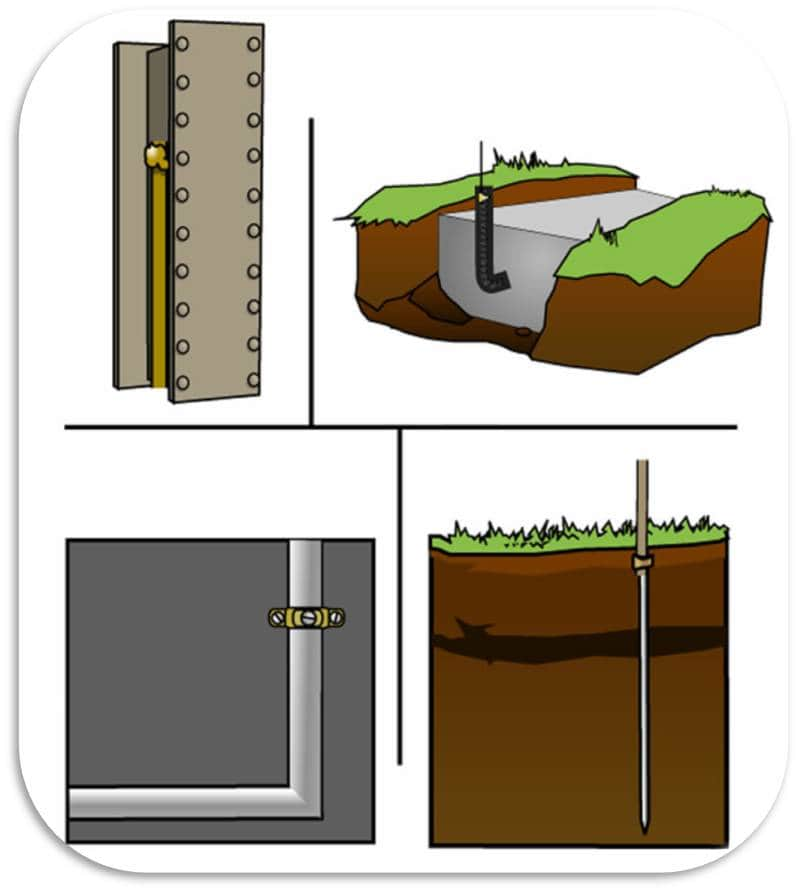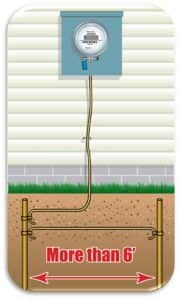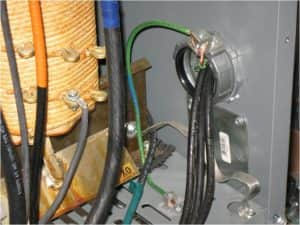Grounding Versus Bonding: Part 1
Published on June 15, 2018 by Jerry Durham

The terms Grounding and Bonding are found throughout the NEC text, and while they are seemingly interchangeable, they are actually two distinct procedures when it comes to the National Electrical Code and installing electrical equipment.
The act of "grounding" (versus bonding) is so important, in fact, that the NEC Code-Making-Panel (CMP) had actually proposed to replace the term "grounding" altogether, so as to provide a term that offered better clarification. Their proposal at that time was to replace the word grounding with "earthing." This proposed change to the NEC gained a lot of traction, but before the Code's publication, the proposal was ultimately retracted.
Grounding
What is grounding exactly? Let's use what we have learned to deduce the answer.
Knowing that the Code-Making-Panel was considering replacing this term with the word "earthing" gives us a good indication of just what the term is trying to relay to us: to wit, "grounding" means to provide a conductive path between electrical equipment and the earth. We can now see why the term "earthing" nearly won the tug-of-war of terms!

Let's look at an example of grounding
An electrical panel is installed outside of a dwelling unit and there is a copper ground rod driven into the earth below. There is a bare, solid copper No. 6 conductor attached to a lug within this electrical panel, and the other end of that No. 6 conductor is clamped onto the driven rod. This is an example of grounding. We have grounded this metal electrical panel by connecting it to the earth!
Bonding
What is bonding? Bonding is simply the act of mechanically connecting two or more conductive materials together to establish a conductive path between them. It is possible to "bond" components together without ever grounding them.
Let's look at this real-world example of bonding
Let's suppose I have three metal, 4-square junction boxes mounted on a non-conductive wooden wall, the boxes are spaced 10' apart. After finding out that we are completely out of EMT (metal thin-wall) conduit on the jobsite, I decide to install a 10' piece of PVC (plastic) conduit between the three metal boxes so that I can complete the job today. I then recall that my employer had specifically told me to bond all 4-square metal junction boxes together in this building. Initially, that was being accomplished by using EMT (metal) conduit between the metal boxes. But I have changed the material to plastic PVC conduit between these last three boxes.
We are aware that the PVC pipe that we have just installed, being essentially plastic, is not a conductor and therefore cannot serve to "bond" these three metal 4-square boxes together. But, if we run a green-colored insulated conductor between the three boxes, utilizing the PVC conduit as a raceway, and then attaching the conductor to the inside wall of each metal box with an approved green bonding screw, we have then successfully "bonded" these three metal boxes together. All of the metal boxes are now bonded together on this job.

So far, so good!
Bonding Vs. Grounding
But alas, we find during a closer inspection that we have left out one critical step in our installation. Though we have successfully bonded these three metal boxes together by connecting them with the green-colored insulated conductor, we have not yet installed a conductor connecting the three metal boxes to the grounded electrical panel. In other words, all of the boxes are connected to one another, but as a system, they are just "floating" — we have not yet introduced a path for fault current to flow from the metal boxes back to the electrical panel! A circuit breaker could not trip during a ground fault condition without that essential path for fault current to flow.
Understanding that dilemma is the point of this article. We want to help you understand that to "bond" components together, is not to ground them. The two terms are in no way interchangeable, and the life-saving benefits gained by grounding equipment are not replicated by merely bonding the equipment. These are two distinct procedures and both are essential when installing metal electrical enclosures, boxes, and equipment within any electrical system.
Part 2 of Grounding VS. Bonding is now available on this website!
Learn More
To learn more about grounding and bonding, sign up for a JADE Learning electrical continuing education course.
